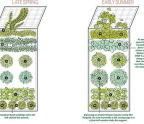GET THE PERFECT GETAWAY!




For those who seek a heavenly cabin-away-from-home, there are a few universal truths: A desire for a peaceful setting; outside living areas that capture spectacular views; a floor plan that fosters time with family and friends; and (typically) a design that is the polar opposite of their primary residence.
Owning a second home may feel like a pipe dream, but there are many valid reasons to take the second-home ownership plunge.
First, you’ll always have a vacation destination that’s perfectly suited to your needs, you won’t have to throw your money away on hotels, and your pets are always welcome.
Second, real estate is a strong investment, and with housing prices on the incline, there’s never been a better time to dive in.
Third, depending on your plans to use the home, you can write off the mortgage interest on your taxes, just like your primary residence. And, thanks to a red-hot home rental market as vacationers seek hotel alternatives, your cabin may even be a viable source of income.
But these perks aside, most cabin or cottage owners
You’re reading a preview, subscribe to read more.
Start your free 30 days

